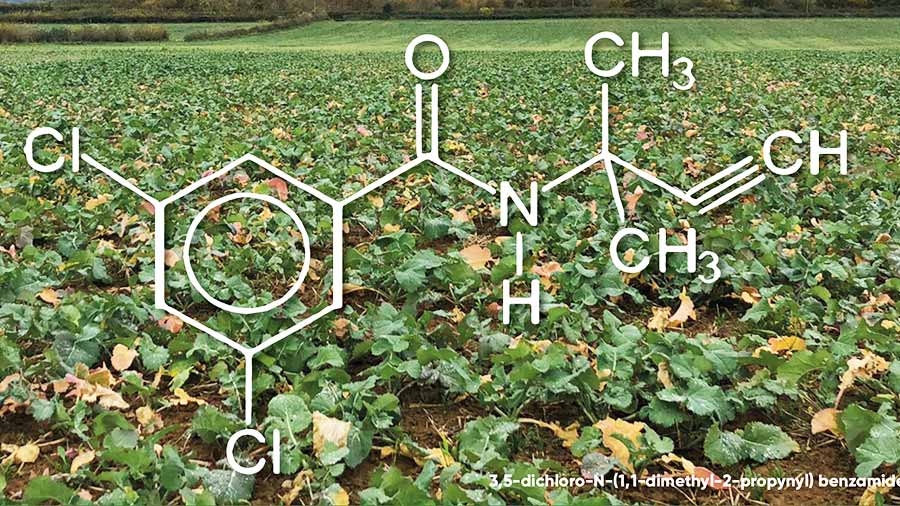Advertiser content
Using propyzamide in an integrated weed control programme
Provided by
Corteva Agriscience™ is a world-leading crop protection and seeds business focused on delivering the solutions UK and Irish agriculture needs to succeed.
For more information see our website Corteva Agriscience
 © Corteva Agriscience
© Corteva Agriscience Non-chemical methods of control have a role to play as part of an integrated grassweed management programme.
These include stopping any seed return by either rogueing or “burning off” patches in the crop; appropriate cultivations which may include post-harvest stubble management and rotational ploughing; appropriate sowing dates – earlier on low risk fields but later on fields with a high weed burden; increasing competition by increasing seed rates; employing stale seedbeds and rotation i.e. include spring cropping.
In conjunction with non-chemical methods, chemical methods of grassweed control remain an integral tool and it is essential that reliable and effective actives are used correctly.
Propyzamide is one such active ingredient which, when used as part of an integrated programme including non-chemical methods, is used to reduce blackgrass and Italian ryegrass in oilseed rape and beans. Its multi-site mode of action means it is one of the few herbicides to which resistance has not developed.
Propyzamide is in HRAC Group 3 (Legacy K1) and inhibits microtubule assembly and chlorophyll synthesis. This means plant cells are unable to divide and die and also become less efficient at photosynthesis.
In the UK, propyzamide is safe to be used on a wide variety of crops, from winter oilseed rape to lettuce and even chicory.
Selective and systemic
Propyzamide is a selective and systemic herbicide, susceptible weeds take propyzamide in through their roots, before distributing it throughout the plant.
Propyzamide can be used pre-emergence and/or post emergence of the weeds. Its effectiveness relies on the formation of a propyzamide zone in the top 5cm of the soil after application.
This layer acts like a reservoir; the susceptible weeds that germinate or root in this section take up the propyzamide and die.
Common symptoms of plants that have been treated with propyzamide include swollen root tips and stem bases. Affected weeds that have emerged will become stunted, followed by yellowing and browning.
An effective propyzamide zone can last up to three months and requires specific characteristics and environmental conditions to optimise its activity. Degradation and thus reduction of the propyzamide occurs most rapidly in warm and moist soils.
Minimum tillage practices boost the efficiency of propyzamide, as they ensure weed seeds germinate in the top 5cm of the soil i.e. in the propyzamide zone.
